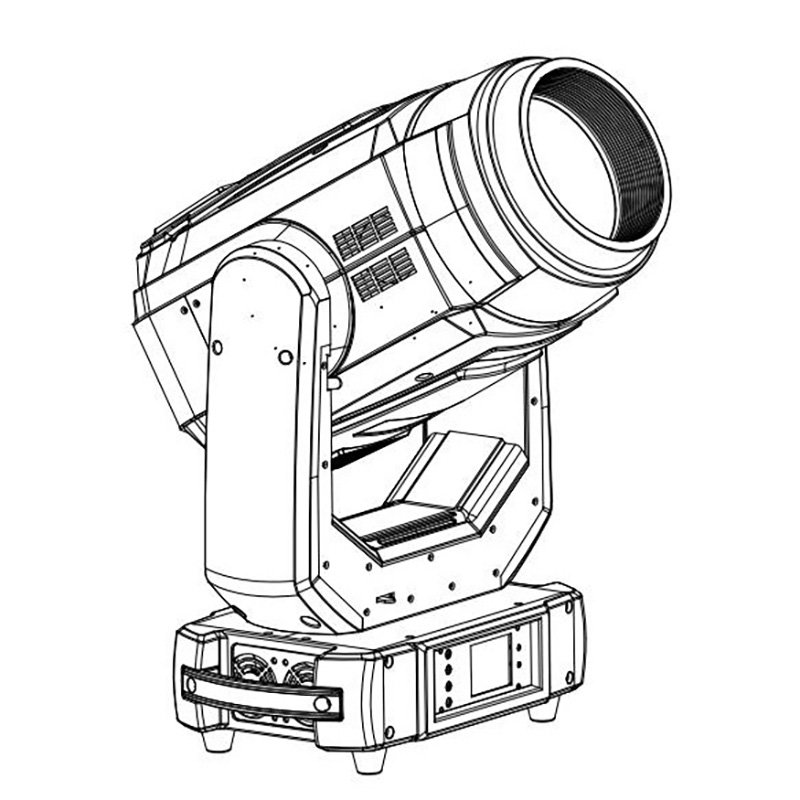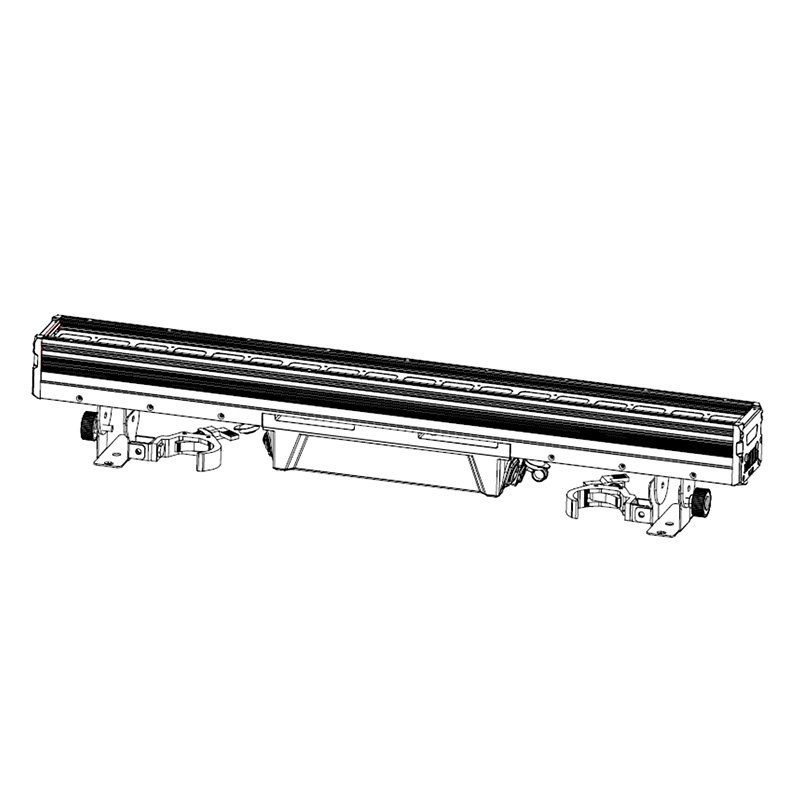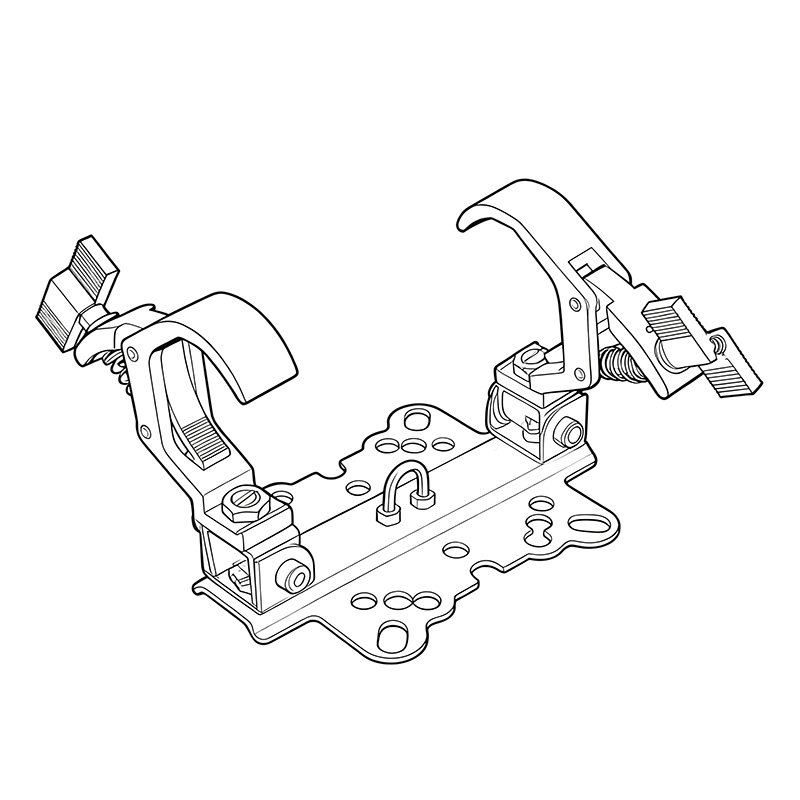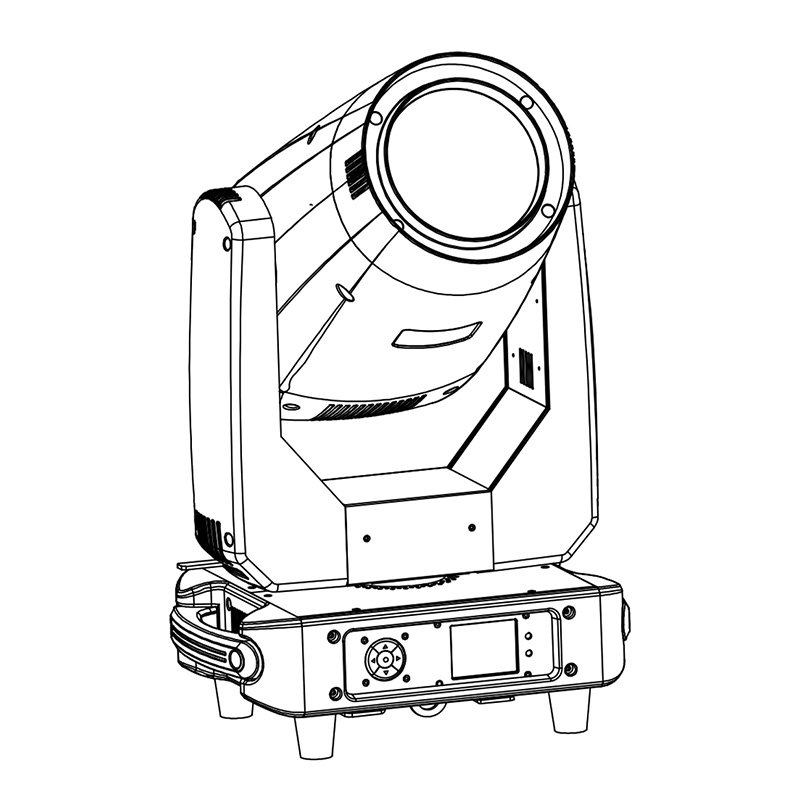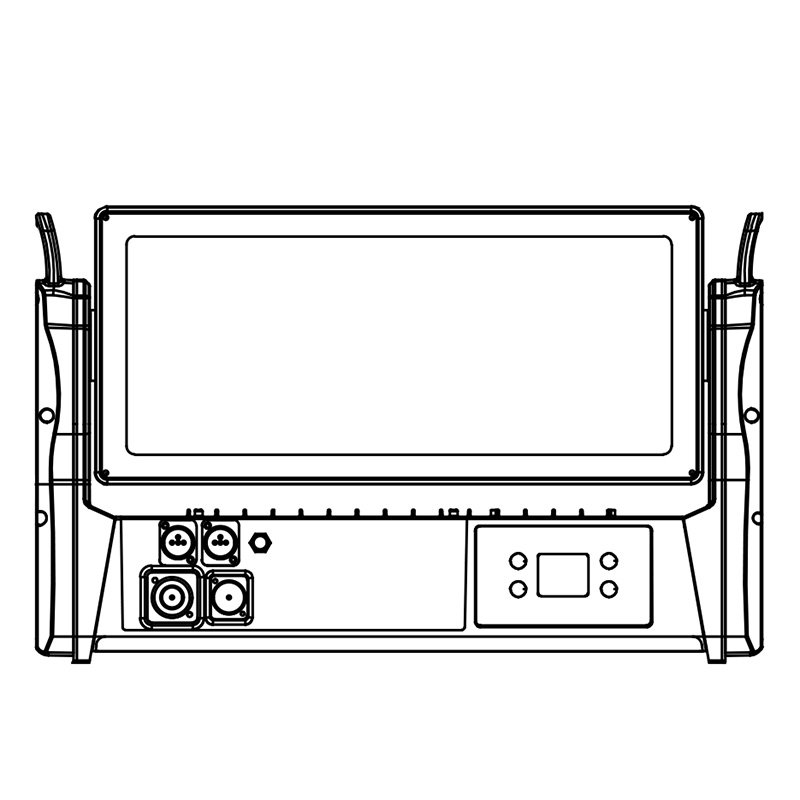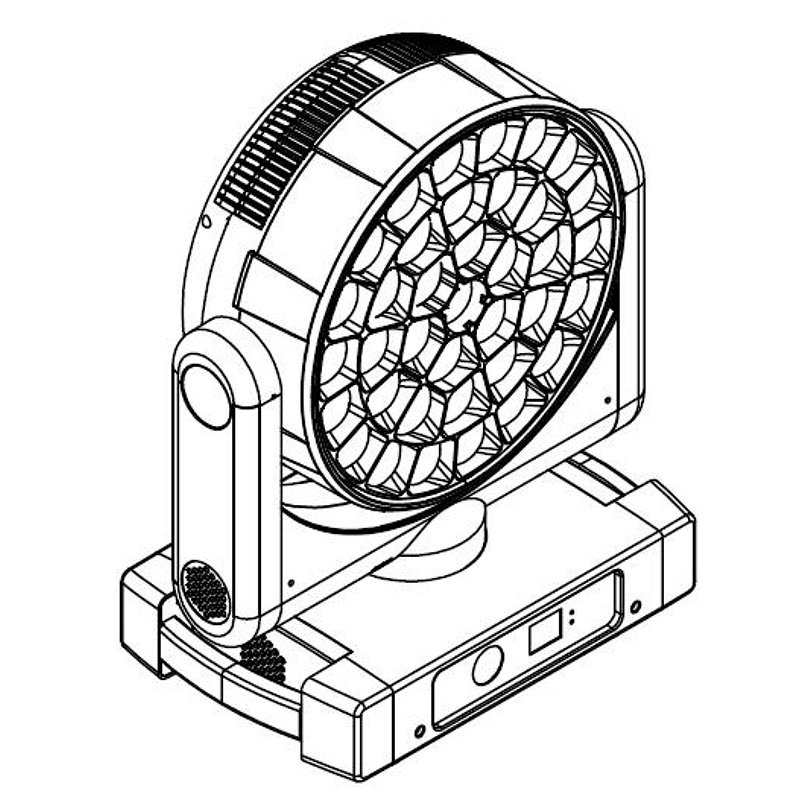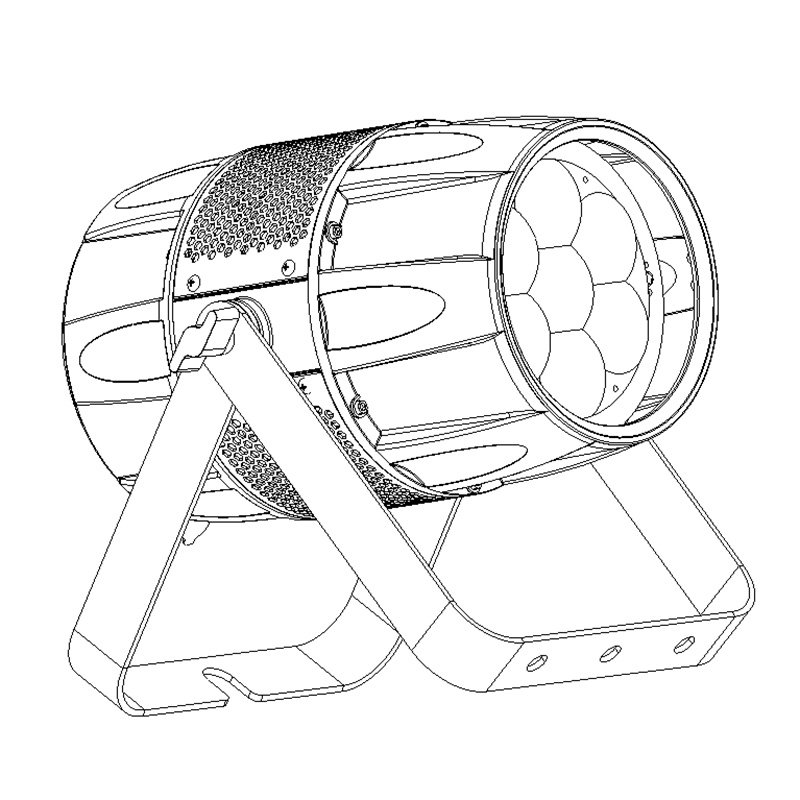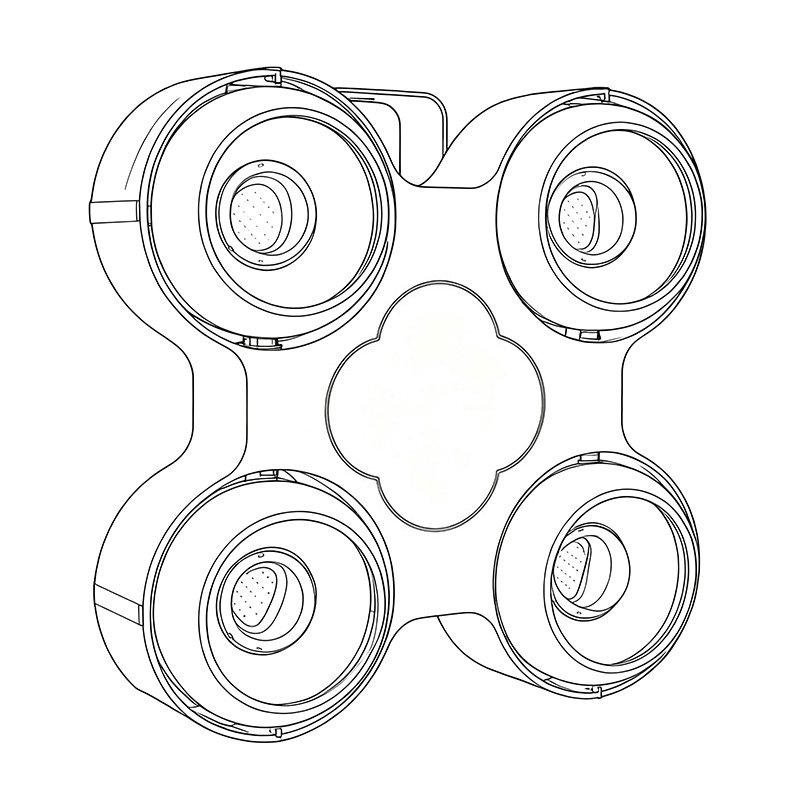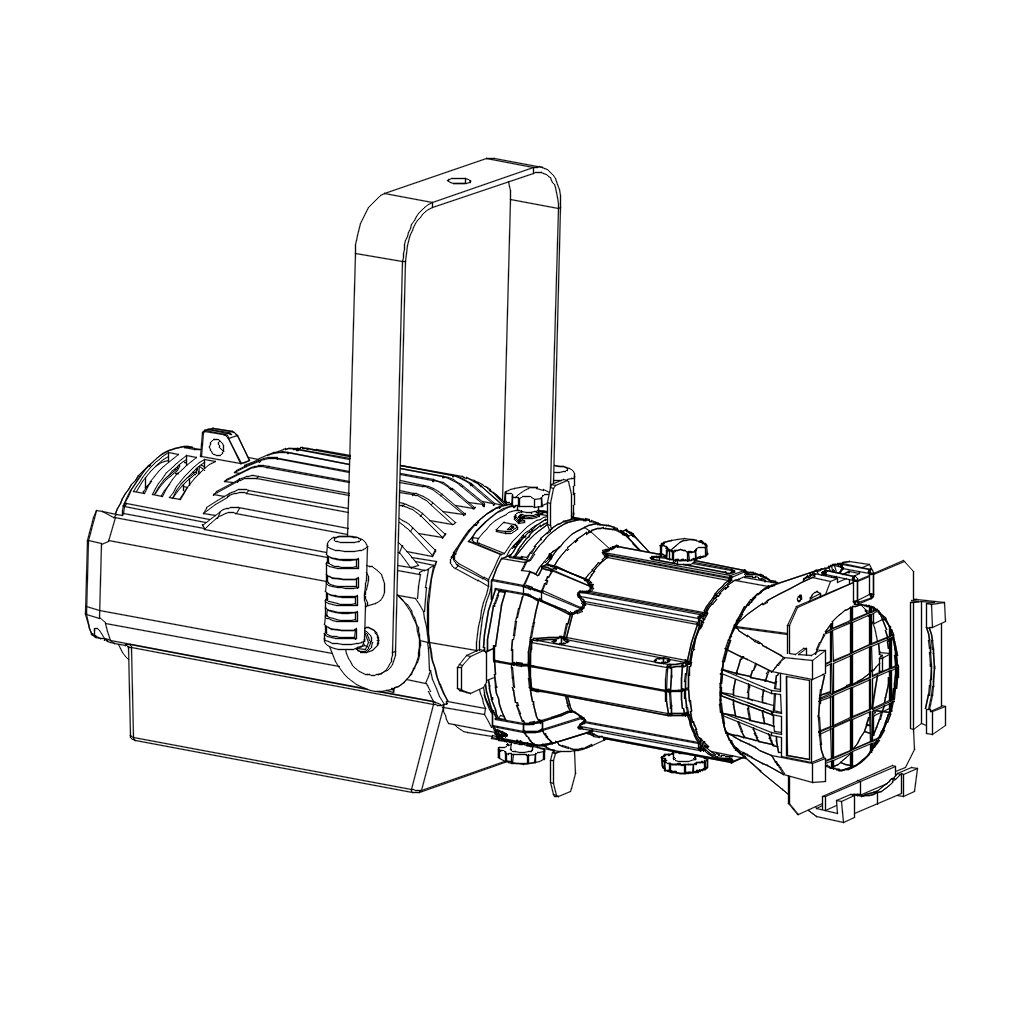Confused by terms like Spot, Wash, and Beam? Choosing the wrong stage light wastes setup time and makes your production look amateur. Understanding each fixture's job is your first step towards professional, impactful lighting design.
The essential types of stage lighting equipment include Spot fixtures for focused light, Wash fixtures for broad coverage, Beam fixtures for sharp effects, Hybrid fixtures for versatility, Effect lighting for dynamic moments, Control/Power systems for operation, and IP-rated fixtures for outdoor use.
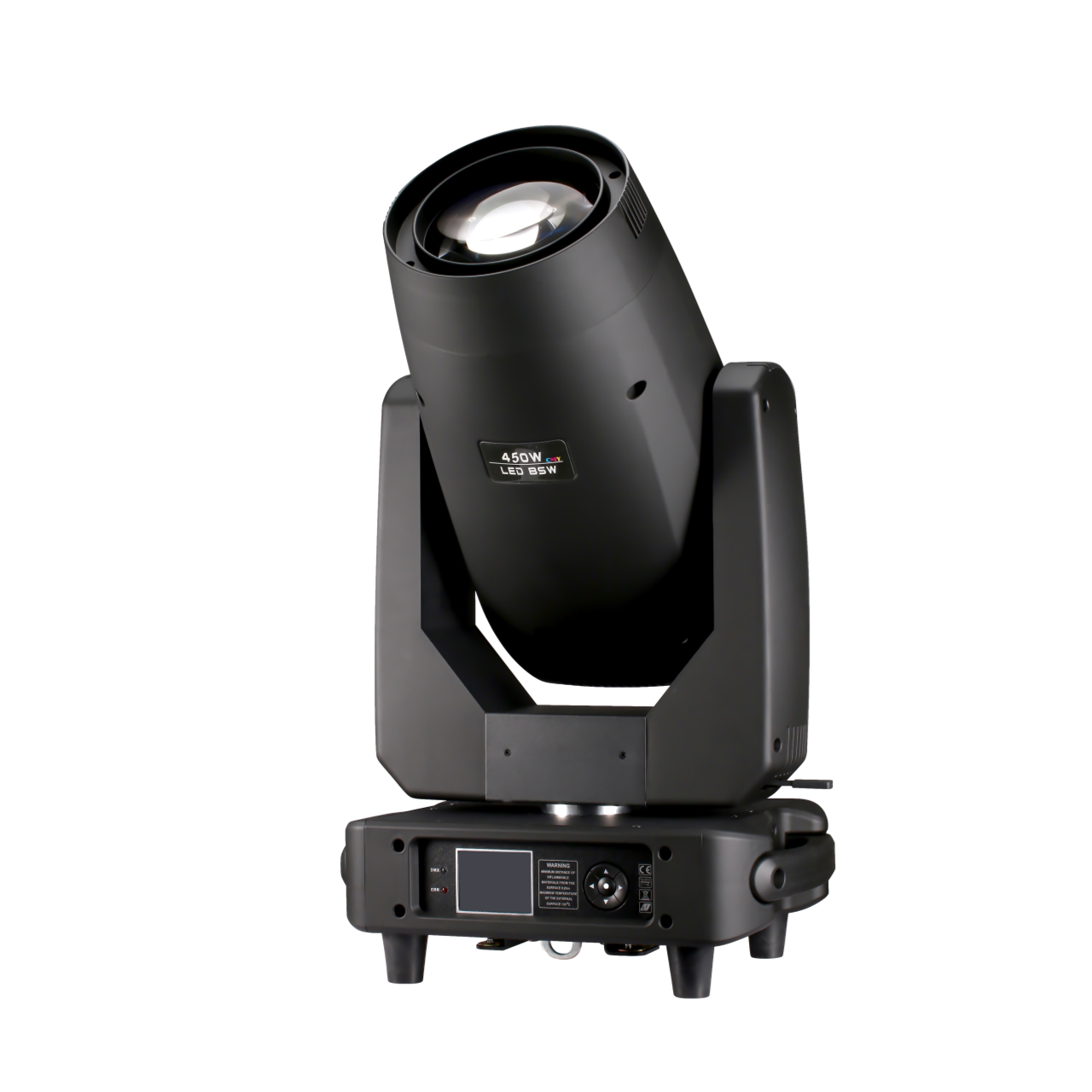 Hot sell Spot Moving Head
Hot sell Spot Moving Head
Getting the lighting right can make or break a performance. Each type of light has a specific job. Understanding these roles helps you choose the right tool to create the impact you want. Let's break down the main categories you'll encounter.
What Do Spot Fixtures Actually Do On Stage?
Need to highlight performers dynamically, project crisp logos, or create textured looks that can move? Using only static lights limits your creativity, while poor focus makes everything look messy. Spot fixtures provide the controlled, defined beams essential for clarity and impact.
Spot fixtures produce focused beams, often with sharp edges, ideal for highlighting performers, projecting patterns (gobos), and precise illumination. Key types include Profile spots (Ellipsoidals/Lekos), automated Spot Moving Heads (LED or lamp-based), and manual Followspots.
Spot fixtures are your tools for precision lighting. They allow you to control where the light goes, how sharp its edge is, and often project patterns or shapes. This category includes both static and automated fixtures:
- Profile Spots (Ellipsoidals / Lekos): These are typically static fixtures, the workhorses for theatre and fixed installations. Their strength lies in beam shaping using internal framing shutters (to create sharp cuts and shapes) and projecting gobos with clarity. They offer excellent optical control for precise, stationary lighting tasks.
- Spot Moving Heads: These automated fixtures offer the functions of a profile spot (gobo projection, focus, often iris and zoom) but with added pan and tilt movement. This allows you to redirect the focused beam anywhere on stage dynamically. They come in LED versions (offering efficiency, long life, and often good color mixing) and traditional lamp-based versions (sometimes offering higher intensity or specific beam characteristics). They are essential for concerts, events, and modern theatre productions requiring flexible and moving spot effects.
- Follow Spots: These are powerful, manually operated fixtures designed solely to track performers around the stage. They prioritize brightness and smooth manual control over automated features.
These fixtures are versatile workhorses used across theater (Profiles for fixed positions, Movers for dynamics), concerts (Movers are dominant, Followspots for keys), keynote lighting, and logo projection. At Aolait, we engineer our Spot Moving Heads for smooth movement, sharp optics, and reliable performance, whether LED or lamp-based.
| Spot Fixture Type | Key Feature | Movement | Primary Application |
|---|---|---|---|
| Profile/Ellipsoidal | Framing Shutters, Static Gobos | Static | Precise Shaping, Fixed Positions |
| Spot Moving Head | Gobos, Focus, Zoom/Iris, Color | Automated | Dynamic Effects, Moving Highlights |
| Follow Spot | High Power, Manual Iris/Focus | Manual | Tracking Performers |
Understanding these different spot types lets you choose the right tool for both static precision and dynamic impact.
Why Are Beam Fixtures Used For High-Impact Looks?
Need to create stunning aerial effects that slice through the air? Weak, fuzzy beams get lost in a busy lighting rig and lack excitement. Beam fixtures are built to produce super-tight, intense beams for maximum visual impact.
Beam fixtures generate extremely narrow, powerful beams of light, often less than 5 degrees wide. They excel at creating dramatic mid-air effects, especially when combined with atmospheric haze or fog.
 Beam Moving Head Light
Beam Moving Head Light
Beam fixtures are all about energy and visual punch. They became incredibly popular for concerts and clubs because of their ability to create sharp, graphic looks in the air. Their key features are:
- Narrow Angle: The defining trait is the extremely tight beam angle. This concentrates the light's energy into a shaft that appears incredibly bright and travels a long distance without spreading out much. Think 'Sharpy-style' fixtures, which pioneered this category.
- Intensity: Because the light isn't diffused, the perceived brightness along the beam is very high, making it cut through other lighting effectively.
- Aerial Focus: They are primarily designed for effects seen in the air, not for illuminating performers or scenery well (the beam is too small and intense). Fast movement, crossing patterns, and fanning effects are their specialty. Haze or fog is almost essential to truly see these beams work their magic.
Applications include concerts (especially rock, pop, and EDM), clubs, high-energy TV shows, and creating beam matrix effects where multiple fixtures work together. When designing beam fixtures at Aolait, we prioritize brightness, fast movement speed, and reliability for demanding shows.
| Feature | Beam Fixture | Spot Fixture (Profile) | Wash Fixture (PAR) |
|---|---|---|---|
| Beam Angle | Very Narrow (<5°) | Narrow to Wide | Wide |
| Primary Use | Aerial Effects, High Impact | Illumination, Gobos | Area Coverage |
| Best With | Haze/Fog | Optional Haze | Optional Haze |
Beam fixtures add pure adrenaline and visual excitement to a lighting rig.
Can Hybrid Fixtures Really Do It All?
Running out of space on your truss or trying to maximize your budget? Rigging separate spot, wash, and beam lights takes time, space, and money. Hybrid fixtures offer a versatile alternative by combining these functions into one unit.
Hybrid fixtures are multi-functional moving lights designed to operate as a Beam, Spot, and Wash fixture (often called BSW). Their main advantage is flexibility, reducing the need for multiple single-purpose lights.
Think of hybrid fixtures as the multi-tool of the lighting world. They aim to give you the punchy aerials of a beam, the gobo projection and shaping of a spot, and the wide coverage of a wash, all from one intelligent fixture.
- How it Works: This magic happens through complex internal mechanics and optics. They usually have wide zoom ranges, multiple gobo wheels (for spot mode), prisms (often used in beam mode), sophisticated color mixing systems, and sometimes specialized lenses or frost filters that move into the beam path to switch functions.
- Versatility vs. Specialization: While incredibly useful, there's often a slight compromise. A hybrid's beam might not be quite as intensely narrow as a dedicated beam fixture, or its wash might not be as perfectly smooth as a dedicated Fresnel. However, the ability to switch roles instantly is a massive advantage.
- Ideal Scenarios: They are perfect for touring events where truck space is limited, for rental houses wanting flexible inventory, and for multifunctional stages (like conference centers or houses of worship) that need to adapt to different types of events quickly. A client like Marco (name changed) who runs a rental company in Italy loves hybrids for simplifying his cross-Europe jobs.
Developing these at Aolait involves careful engineering to optimize each mode and ensure smooth transitions, providing maximum value.
| Function | Hybrid Capability | Strength Compared to Dedicated |
|---|---|---|
| Beam | Narrow beam mode | Usually good, maybe less intense |
| Spot | Gobo projection, focus, possibly shape | Often very capable |
| Wash | Wide zoom, frost filter | Can be good, maybe less smooth |
Hybrid fixtures offer outstanding flexibility, making them a smart investment for many applications.
What Kinds Of Effect & FX Lighting Add Drama?
Want to create those unforgettable moments that make the crowd roar? Standard lighting sets the scene, but special effects lighting creates the peaks of excitement and visual drama. These fixtures are designed for impact.
Effect & FX lighting includes specialized fixtures built for specific, dynamic visual impacts like strobe flashes, audience blinders, pixel-mapped visuals, lasers, and atmospheric effects like fog or haze.

Led Strobe Light
Effect lighting goes beyond basic illumination to add layers of excitement and visual flair. These are the tools for creating 'wow' moments:
- Strobes: Deliver intensely bright, rapid flashes of light. Modern LED strobes offer control over flash rate (speed), duration (how long each flash lasts), and intensity. Many can also function as wash lights or create zoned 'pixel' effects. Great for emphasizing beats or creating high-energy sequences.
- Blinders: Arrays of lights pointed directly at the audience. Used sparingly for maximum impact, they create powerful bursts of light that connect the stage and audience or punctuate a musical moment.
- Pixel Bars / LED Strips: Linear fixtures containing multiple individually controllable LEDs (pixels). When arranged together, they can display intricate patterns, chase effects, or even low-resolution video content, often called 'eye-candy'.
- Lasers: Produce highly coherent beams for sharp graphics, tunnels, fans, or 'liquid sky' effects projected over the audience. Require careful safety considerations and often specific certifications.
- Atmospheric Effects: Not lights, but crucial enhancers. Fog machines create thick clouds, haze machines produce a fine mist to make light beams visible, and flame effects (real or simulated) add raw energy.
These effects are staples in EDM shows, high-energy concerts, nightclubs, and for creating dramatic transitions in theatre or events. Our Aolait effect lights are built for reliability and precise control.
| Effect Type | Visual Description | Primary Use |
|---|---|---|
| Strobes | Rapid, bright flashes | Impact, Energy, Emphasis |
| Blinders | Audience-facing light bursts | Impact, Audience Connection |
| Pixel Mapping | Individually controlled LEDs, patterns | Eye-Candy, Dynamic Looks |
| Lasers | Coherent beams, graphics | Aerial Effects, Graphics |
| Atmospherics | Fog, Haze, Flame | Enhance Beams, Add Mood |
Using effects thoughtfully can elevate a production from good to unforgettable.
Why Are Control & Power Systems The Unsung Heroes?
You've picked out the perfect lights, but how do you make them do what you want, safely? Flickering lights, missed cues, or overloaded circuits can derail a show instantly. Reliable control and power are the invisible foundation of every successful lighting system.
Control systems (consoles, networks) tell the lights what to do, while power systems distribute electricity safely and reliably. Without robust control and power, even the best fixtures are just expensive paperweights.
 hand take power distributor
hand take power distributor
Never underestimate the importance of the infrastructure that runs the lights. It's not glamorous, but it's absolutely essential.
- Control Systems:
- Lighting Consoles: The command center. This hardware desk or software program allows a lighting operator to program cues, adjust intensities, colors, positions, and trigger effects. They range from simple fader panels to complex consoles managing thousands of lights over networks.
- Protocols & Networking: DMX512 is the traditional cable-based standard. Modern systems heavily rely on network protocols like Art-Net or sACN, sending DMX data over Ethernet for greater capacity and flexibility. Splitters and signal boosters ensure data integrity in DMX chains, while network switches manage Art-Net/sACN traffic.
- Power Systems:
- Power Distribution Units (PDUs): Safely break down high-amperage main power into individual circuits for fixtures, using circuit breakers (MCBs, RCDs) for protection against overloads and faults.
- Dimming (Less Common for LEDs): Traditionally used for tungsten lamps, dimmer racks control intensity by varying voltage. Most modern LED and moving lights have internal dimming and require constant 'hot power'.
- Cabling: Using properly rated power cables (like powerCON, Socapex multi-cables) and data cables is crucial for safety and reliable operation.
These systems are fundamental for any professional lighting setup, from a small DJ rig to a massive stadium tour. At Aolait, we ensure our lights comply with standard protocols and provide clear power/data specifications because we know system reliability starts here.
| System Component | Function | Importance |
|---|---|---|
| Lighting Console | Programming & Playback Control | Central Brain |
| Control Network | Transmitting Data (DMX, Art-Net, sACN) | Communication Backbone |
| Power Distribution | Safe Electrical Supply & Protection | Safety & Reliability |
| Cabling | Connecting Power & Data | Physical Link |
Solid control and power are non-negotiable for a professional and safe show.
When Are IP-Rated Outdoor Fixtures Necessary?
Planning an outdoor festival, lighting up a building, or setting up near water? Standard stage lights can't handle rain, dust, or humidity – they'll fail quickly, leading to show problems and expensive damage. IP-rated fixtures are built specifically to survive the elements.
IP-rated (Ingress Protection) fixtures feature sealed enclosures designed to resist dust and water intrusion. Ratings like IP65 make them suitable and reliable for outdoor events, architectural installations, and other harsh environments.
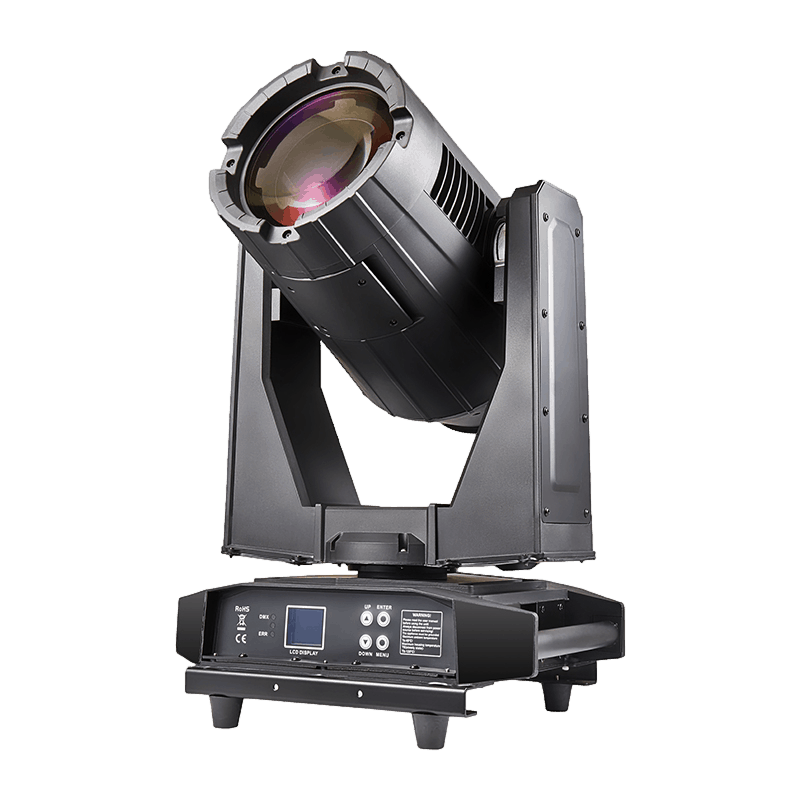 Waterproof Beam Spot Wash
Waterproof Beam Spot Wash
When your lighting has to face Mother Nature, an IP rating is essential. This rating tells you how well a fixture is sealed. It has two digits:
- First Digit (Solids): How well it's protected against things like dust and dirt. Ranges from 0 (no protection) to 6 (completely dust-tight).
- Second Digit (Liquids): How well it resists water. Ranges from 0 (no protection) up to 8 (continuous immersion) or 9K (high-pressure jets).
For most outdoor stage applications, IP65 is a common and effective rating:
- '6' (Dust Tight): No dust can get inside. Crucial for dusty festival fields as much as for rain.
- '5' (Water Jets): Protected against low-pressure water jets from any direction. This handles typical rain showers effectively.
Achieving this requires careful design: sealed housings with gaskets, waterproof power and data connectors (often specialized types like Seetronic or True1 TOP), and sometimes UV-stable materials that won't degrade in sunlight. Internal pressure management might use breathable membranes.
These fixtures are essential for festivals, architectural lighting on buildings or landscapes, and permanent outdoor installations. We invest heavily in the design and testing of our Aolait IP-rated fixtures, knowing our customers depend on them working flawlessly, whatever the weather.
| IP Rating | Solid Protection (Dust) | Liquid Protection (Water) | Typical Use Case |
|---|---|---|---|
| IP20 | Basic (>12.5mm) | None | Indoor Only |
| IP65 | Dust Tight | Low-Pressure Jets (Rain) | General Outdoor / Festivals |
| IP66 | Dust Tight | Powerful Jets (Heavy Rain/Washdown) | Exposed Locations |
| IP67 | Dust Tight | Temporary Immersion (1m) | Risk of temporary flooding |
Choosing IP-rated gear provides peace of mind and ensures reliability when working outdoors.
Conclusion
Knowing these seven core types of stage lighting equipment – Spots, Washes, Beams, Hybrids, Effects, Control/Power, and IP-rated fixtures – empowers you to make informed decisions for any production need.

